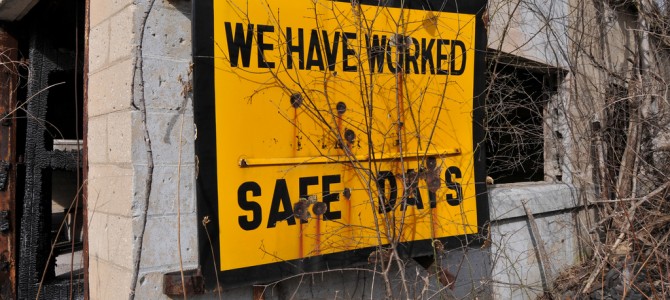
The disturbing evidence about the health of white middle-aged American working class, discovered and publicized this week by Nobel prize winner Angus Deaton and his wife Anne Case, is not tied to just one trend in the culture, policies, or economic factors at work within the United States. It is not the fault of one party or movement, but has multiple root causes. But it is something we all ought to be concerned about, both for the future fiscal and policy burden it represents, and for the broader lesson it tells us about how America is changing.
The numbers clearly indicate that these Americans are increasingly likely to kill themselves – whether on purpose or through the slow gradual death of addiction to alcohol and prescription drugs. The rate of mortality increased most dramatically for white Americans lacking any more than a high school education.
Deaton and Case connect the problem to several factors, including the obvious levels of stress and financial concerns within this population. But they also draw in the prospect that America’s dramatic increase in the portion of the working age population considered disabled has had a negative effect for the life prospects of these Americans.
There have been a host of reports about the rise in the number of Americans receiving disability payments over the past three decades – this one, from This American Life, is still fairly definitive. It is impossible to understand the current Labor Force Participation situation without acknowledging this dramatic growth.
“Here’s a look at people from their mid-20s to mid-50s, and the reasons they gave for not being in the labor force in 1999 and 2014. The biggest shift has been the share of Americans who don’t work because they’re disabled or ill—this has risen among every age group, in some cases pretty sharply. In 1999, 8% of those in their early 50s cited disability. In 2014, it was 11%. This gets relatively little attention among economists, despite accounting for the biggest shift.”
This graph from the Wall Street Journal shows the situation clearly:

As Deaton and Case write:
“Our findings may also help us understand recent large increases in Americans on disability. The growth in Social Security Disability Insurance in this age group is not quite the near-doubling shown in Table 2 for the Behavioral Risk Factor Surveillance System (BRFSS) measure of work limitation, but the scale is similar in levels and trends. This has been interpreted as a response to the generosity of payments, but careful work based on Social Security records shows that most of the increase can be attributed to compositional effects, with the remainder falling in the category of (hard to ascertain) increases in musculoskeletal and mental health disabilities; our morbidity results suggest that disability from these causes has indeed increased. Increased morbidity may also explain some of the recent otherwise puzzling decrease in labor force participation in the United States, particularly among women.”
In part, the reason for the ability of Americans to access SSDI as a kind of unemployment benefit fallback is due to a Reagan-era policy shift – via the unanimously passed 1984 Social Security Disability Benefits Reform Act. This measure, which loosened criteria for eligibility, led to dramatic increases in those “hard to ascertain” diagnoses of chronic pain and mental illness as an avenue to benefit access.
These decisions didn’t happen in a vacuum – they came after prior tightening of the rolls. But their impact was significant. As Avik Roy notes:
“The SSDBRA instructed the government to place greater weight on applicants’ own assessments of their disability, especially when it came to pain and discomfort; to replace the government’s medical assessments with those of the applicants’ own doctors; and to loosen the screening criteria for mental illness, among other things. The overall effect was to create a giant loophole, by which an applicant’s subjective claim that he was in pain, or mentally incapacitated, would be enough to claim disability.”
Roy notes that “While Americans may be gaining weight, they suffer from fewer disabling conditions than they did 40 years ago, thanks to advances in medical technology.” He cites this paper published by the Center for American Progress and the Brookings Institution, which illustrates traditional and clearly diagnosed causes of disability have stayed at expected levels, but not so for musculoskeletal and mental disorders:
“Diagnoses that lend themselves to subjective manipulation, like back pain and mental illness, have grown substantially. And it’s not just medical diagnoses that are driving growth in disability payments. Being a high school dropout now increases one’s likelihood of gaining disability benefits, because high school dropouts are considered to have a lower likelihood to rejoin the workforce.”
As the New York Times reported:
“Dr. Case, investigating indicators of poor health, discovered that middle-aged people, unlike the young and unlike the elderly, were reporting more pain in recent years than in the past. A third in this group reported they had chronic joint pain over the years 2011 to 2013, and one in seven said they had sciatica. Those with the least education reported the most pain and the worst general health. The least educated also had the most financial distress, Dr. Meara and Dr. Skinner noted in their commentary. In the period examined by Dr. Deaton and Dr. Case, the inflation-adjusted income for households headed by a high school graduate fell by 19 percent.”
A Troubling Trajectory
As a policy matter, this evidence raises concerns not just about the trajectory of these middle-aged Americans at the moment, but also longer term concerns about the downside of these trendlines – including the possibility that they will enter the old age benefit portion of Medicare in much worse health than prior generations. We are already seeing this problem within those states that have joined Obamacare’s Medicaid expansion, where the costs of providing coverage to a group of mostly childless middle-aged adults turns out to be a group that is in much worse health than expected due to alcohol, drug use, and irresponsible health choices. The reforms in the latest budget deal to SSDI increases medical review requirements and goes after fraud in the system, but it remains to be seen how much impact that will have on the fiscal side.
As a cultural matter, the picture is even worse. The surrender to the permanent trap of disability payments is a consequence of a loss of a certain American working class stoicism, which grappled with the tragic nature of life with what was essentially a 19th-century mentality. It was hard enough to deal with such a vision before the disintegration of working class marriage in the country – notice the contrast drawn by Charles Murray between the attitudes toward marriage and the experience of divorce in the white working class versus professionals.


Imagine entering your fifties and looking back on your life and seeing substance abuse, disintegrated families, distance from kids, limited neighborhoods where connections have frayed, and the humility of economic dependence as far as the eye can see, and you start to understand how the slow and the quick roads to destruction seem more tempting than dealing with the pain of life.
That lack of hope is exacerbated by the absence of belief in a higher purpose or involvement in a community of religious believers. Generation X has not increased its portion of the religiously unaffiliated as dramatically as Millennials, but it is still significantly less tied to the church than Baby Boomers:
“[T]he number of religiously unaffiliated adults has increased by roughly 19 million since 2007. There are now approximately 56 million religiously unaffiliated adults in the U.S., and this group – sometimes called religious “nones” – is more numerous than either Catholics or mainline Protestants, according to the new survey. Indeed, the unaffiliated are now second in size only to evangelical Protestants among major religious groups in the U.S.”
Pew released new numbers on this just the other day, and there is no sign of a shift in the trends here.
The Snake Oil Salesman
A number of pieces have, over the course of this election cycle, delved into the question of America’s “lost” greatness, and what would lead voters to find Donald Trump’s message so appealing. It is not that hard to understand in this context. You are one of the millions of middle-aged unemployed white American with a high school degree. Having moved from unemployment benefits to disability, you receive sufficient benefits to subsist – around 1,200 dollars a month on average – and to pay for the alcohol and drugs that help you self-medicate, in addition to what your doctor has prescribed. Your life is essentially one marked by hopelessness. You are statistically unlikely to ever re-enter the workforce.
For all too many Americans in this segment of the population, the things that make life not only endurable but happy are faith, now lost to us; family, which is fractured; community, which is disintegrated; and work, which most find hard to come by. The TV screen flickers with images of people living lives you could never hope to emulate. Your situation is bleak, and while our soma is better, it is still not a replacement for the pursuit of happiness.
And then a man who represents a version of what you might hope your life could be like comes on TV – a man who comes from the world of the elites but is strong enough to reject them and their lies – and he tells you with confidence he will make things great again.
And you listen.









